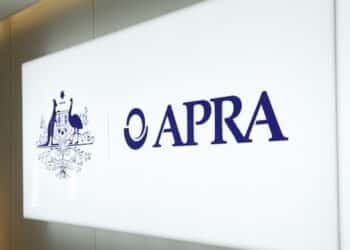The Australian government issued $7 billion of its inaugural green bond this week, which was heavily oversubscribed with more than $22 billion in bids from 105 investor institutions across Australia, Asia, Europe, and North America.
This enthusiastic response, according to Treasurer Jim Chalmers, “confirms Australia is a go‑to destination for international green capital”, adding that the issuance remains a “major milestone” for Australia’s sustainable finance market.
The green bond, maturing in June 2034, will pay a coupon of 4.25 per cent.
“The global energy transformation represents a golden opportunity for Australia and this bond is pulling more global and domestic green capital into financing that opportunity,” Chalmers said in a statement.
“Money raised from the bond will back projects that will help make Australia an indispensable part of the global economy and bring new jobs to communities all around the country.”
These will include projects like green hydrogen hubs, community batteries, and clean transport as well as programs to conserve biodiversity, among others.
“The projects supported by the bond will deliver significant environmental benefits, including lowering greenhouse gas emissions, increasing Australia’s renewable energy production and bolstering our biodiversity conservation, restoration and adaptation,” Chalmers said.
Murray Ackman, senior ESG and impact analyst at Pendal, said the investment manager was “very active” in buying the bond, having determined that it will have a real impact.
“At Pendal, we are not interested in green bonds made up of already-completed projects that they were going to work on anyway, such as public transport or other infrastructure projects,” said Ackman.
“We want the first Commonwealth green bond to support new projects. This is known as additionality – that is, funding something that would not have been funded but for this green bond.
“Half the proceeds will go towards existing commitments and half will go towards new commitments. In our view, this is quite reasonable and is better than some other green bonds from governments.”
Ackman explained the Pendal investment team was “pleased” with the scope of projects the green bond would fund, noting that governments have a different risk profile to the private sector, which gives it an opportunity to fund “catalytic change”.
“Electrification using renewable energy will significantly reduce emissions. The green bond includes investments in modernising the electricity grid and developing new transmission infrastructure through concessional financing,” he explained.
“This bond also funds projects that relate to this – from community batteries and electric vehicle charging infrastructure to loans for energy-saving home upgrades.”
Importantly, he said, the government has committed to distribute an annual impact report no later than 18 months after first issuance and has pledged independent verification of allocation and impact reporting.
Looking ahead, Ackman predicts the offering should perform well in the secondary market, given a new green bond is unlikely to be issued for at least a year or two.
“A green bond should be a reflection of an issuer’s philosophy – not an apology for their action,” he said, adding that the government “put a lot of effort to make sure it got its inaugural green bond right” in line with its climate change objectives.
Appetite for sustainable fixed income grows
Betashares’ responsible investments director, Greg Liddell, said the debut green bond will benefit ethical investors seeking fixed income exposures in their portfolios.
“For Australian investors, 10-year Australian Treasury bonds are important portfolio building blocks and now ethical investors can add this exposure to their portfolio, while also ensuring the proceeds are used in ways that align with their values,” he said.
“This will help ethical investors reduce tracking within the fixed income component of their portfolio.”
Presently, a number of Australian states have issued their own green bonds, such as Victoria in July 2016, and more recently, Western Australia in June 2023.
More issuers of green bonds, both state governments and corporates, are likely to be seen over time as a result of this development, he added.
In the last few years, there has been a significant surge in green bond issuance in the Asia-Pacific (APAC) region, with issuance growing three times between 2020 and 2021, according to international asset manager Robeco.
Its latest 2024 Global Climate Investing Survey found a higher appetite among Asia-Pacific investors, including Australia, to green bonds than their global peers.
Surveying some 300 institutional and wholesale investors in Europe, North America, and Asia-Pacific, it found green bonds were among Asia-Pacific investors’ most preferred ways to invest in transitioning companies (52 per cent), compared to 51 per cent of European investors and just 25 per cent of North American investors.
Globally, around 43 per cent of investors are investing in green bonds or sustainability-focused bonds to support the decarbonisation of companies and governments.
“A key reason cited for this was companies’ improved disclosures and the ring-fencing of proceeds. This suggests that green bonds not only have momentum in the market but are also backed by investor confidence,” it said.







